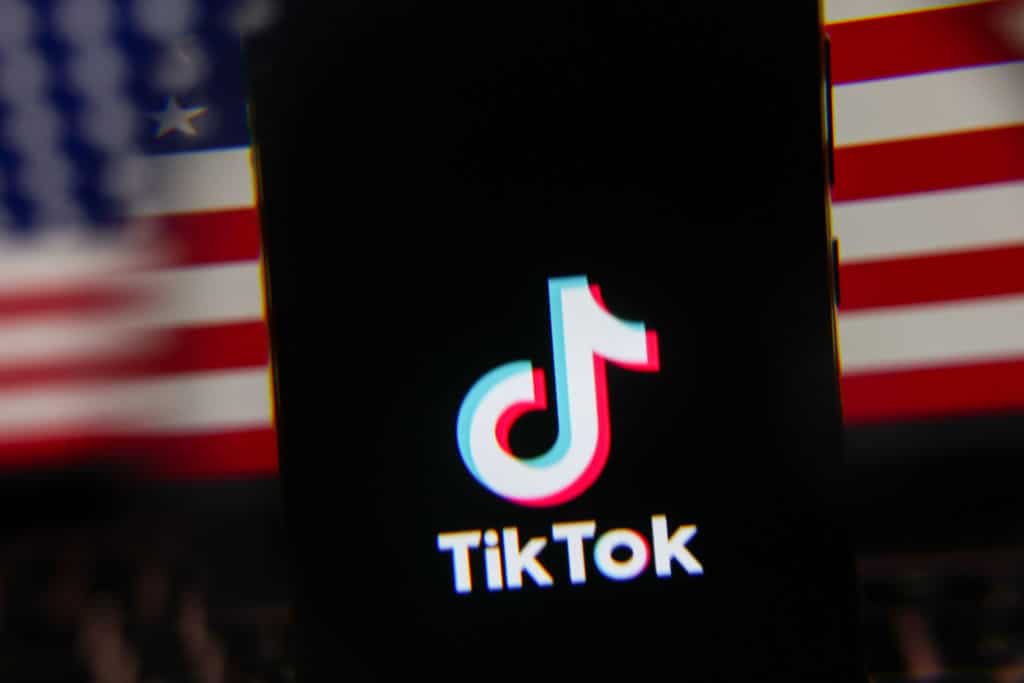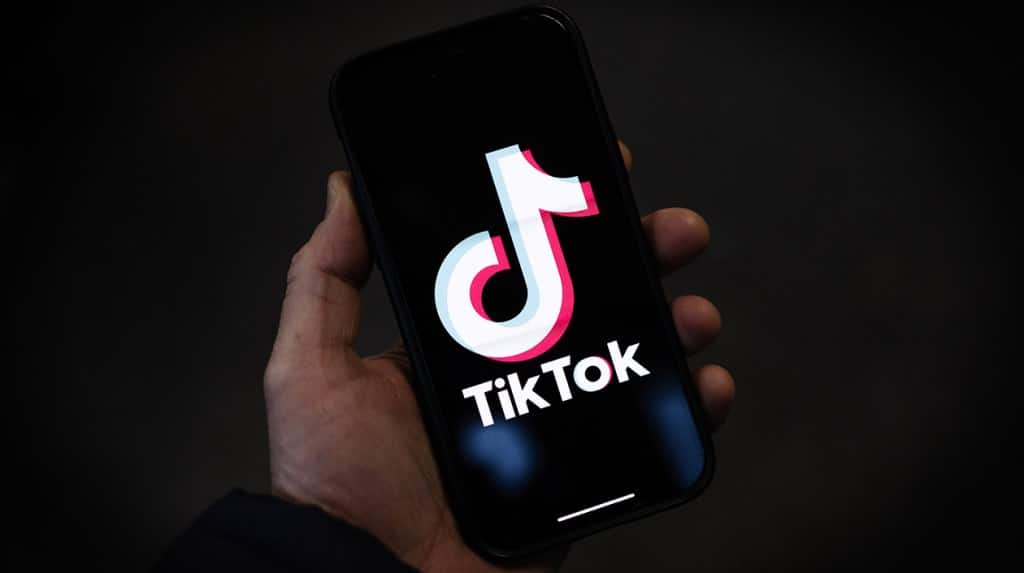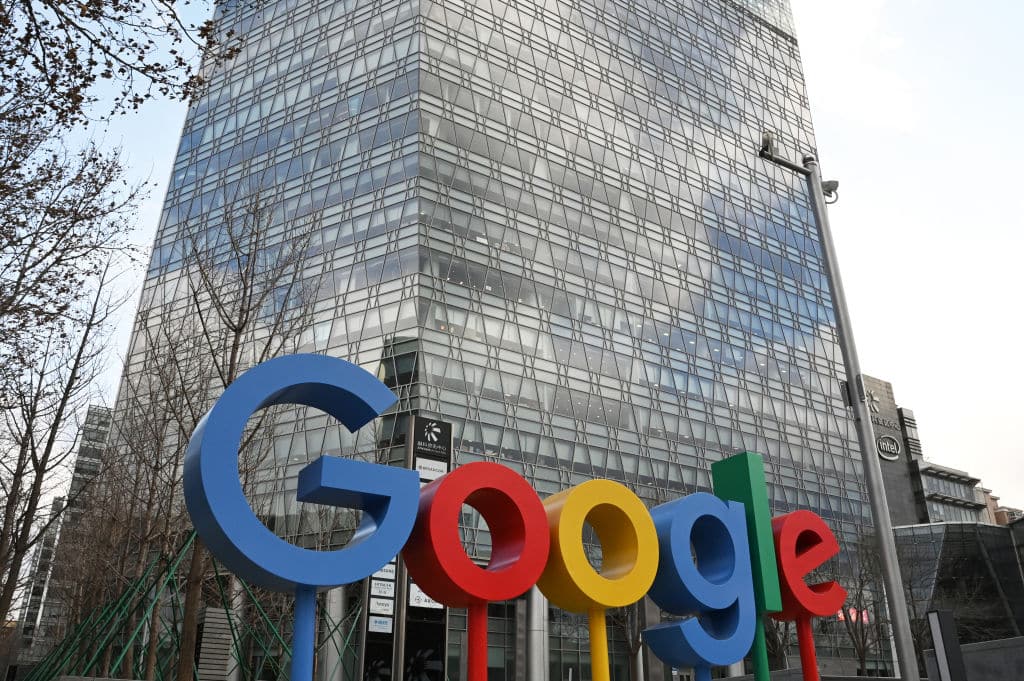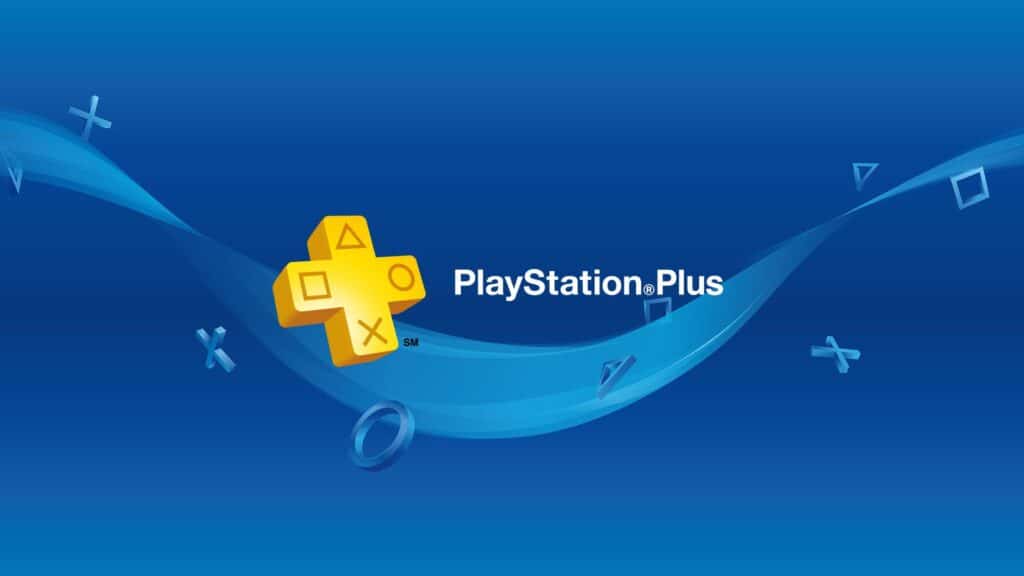tech
Page: 19
MashApp, a music remixing app featuring hit songs from Doja Cat, Ed Sheeran, Britney Spears and more, launched in the Apple app store Tuesday (Feb. 18). At launch, the AI-powered app has already worked out licenses for select tracks from Universal Music Group (UMG) and Warner Music Group’s (WMG’s) publishing and recorded music catalogs, Sony Music’s recorded music catalog, and Kobalt’s publishing catalog.
The app, founded by former Spotify executive Ian Henderson, features a TikTok-like vertical feed for users to share the remixes they make with the app. Among the tools it offers to users, MashApp boasts the ability to combine and mix multiple songs into each other and to speed up, slow down or separate out a song into its individual stems (the individual instrument tracks in a master recording).
Trending on Billboard
News of MashApp’s launch arrives just days after Bloomberg reported that Spotify is planning to launch a superfan streaming tier that includes extra features, like high-fidelity audio and in-app remixing tools.
MashApp, however, is the latest standalone app to use cutting edge technology, like AI, to allow users to morph and manipulate their favorite songs. Last year, Hook, another AI remix app, announced its licensing deal with Downtown. Other companies, like Lifescore, Reactional Music and Minibeats, have also played with the idea of allowing users more control over the music they listen to in recent years. With these tools, fans can turn static recordings into dynamic works that evolve over time based on a listener’s situation, whether that’s having the music respond to actions in a video game in real time or while driving a car. Even Ye (formerly Kanye West) played with this concept during the rollout of his album Donda 2, which was only available via a hardware device, called a Stem Player, that let listeners control the mix of the album.
MashApp is available for free or via a paid subscription for ad-free listening and additional features. Though mashups and remixes of hit songs are popular soundtracks for short-form content on TikTok and Instagram Reels, MashApp creations must be enjoyed within the app and are only available for personal use.
“MashApp’s mission is to bring the joy of playing with music creation to non-musicians, to let people play with their favorite music, as they have long done through DJing, mix tapes, mashups, and karaoke,” explained MashApp CEO/founder Henderson in a statement. “We want this new creative play to be a great experience for fans, but also for artists. This requires close partnerships with record labels and music publishers, and we’re excited that our partners have embraced our vision.”
Mark Piibe, executive vp of global business development & digital strategy at Sony Music, added: “We are pleased to be working with MashApp to help fans go deeper in how they engage with their favorite music through a new personalization and creation experience that appropriately values the work of our artists. This partnership furthers Sony Music’s ongoing commitment to supporting innovation in the marketplace by collaborating with developers of quality products that see opportunity in solutions that respect the rights of professional creators.”
“UMG always seeks to support innovation in the digital music ecosystem. MashApp introduces another evolution of the streaming experience for users by combining the creativity of DJ apps, with the accessibility that streaming offers,” said Nadir Contractor, senior vp of digital strategy & business development at UMG. “Within MashApp, users can unlock their own creative expression to curate, play and enjoy in real-time musical mashups from their favorite artists and songs, while respecting and supporting artist rights.”
“Our commitment to championing the rights of our artists and songwriters is at the core of everything we do,” said John Rees, senior vp of strategy & business development at WMG. “This partnership with MashApp builds on this mission–delivering a licensed, innovative platform that not only offers fans an exciting way to engage with music but also safeguards the work of the artists and songwriters who make it all possible.”
Lastly, Bob Bruderman, chief digital officer at Kobalt Music, added, “Kobalt has been a strong supporter of new companies that allow fans to express their creativity and engage with music they love. It was immediately clear that MashApp had a unique vision that opened a new experience for music fans on a well-executed platform, simultaneously respecting copyright. We look forward to a long partnership with MashApp.”
Ole Obermann, the long-serving global head of music business development, is leaving the company. Tracy Gardner will step into the role after his departure at the end of March.
“I am proud to have played a role in bringing so many people the joy of music while at TikTok,” Obermann wrote in a note to staff on Tuesday (Feb. 18), according to Music Business Worldwide. “We have an amazing team,” he continued, “and leadership and music will continue to thrive and evolve on TikTok.”
A representative for TikTok declined to comment.
Trending on Billboard
Obermann started at TikTok in 2019. Before that, he spent three years at Warner Music Group as chief digital officer/evp, strategy and business development, and a decade at Sony Music, where he worked on licensing renewals with Spotify, Apple Music and YouTube, as well as deals with Facebook and many other digital services. Gardner also worked at WMG prior to joining TikTok.
During Obermann’s time at TikTok, the platform grew rapidly and became a major conduit for music discovery, changing the ways that artists made and marketed songs, and the ways that labels signed and promoted artists.
As TikTok grew, it also evolved from its roots as a dance-focused app for younger users. “Even though it’s been a bunch of years since we morphed from Musical.ly to TikTok, there is still, in some communities, this misconception that the artist needs to get out there and do a dance to their song, and then it’s going to go viral,” Obermann said last year.
For the music business, Obermann often served as the TikTok’s public face. TikTok’s relationship with the industry was tense for much of 2024: There was a monthslong standoff with Universal Music Group before the two parties came to a licensing agreement.
“There was obviously a value conversation: What are the payments that are happening, and also how much marketing and promotion can we provide to help with the discovery of new music or new artists that are priorities for them?” Obermann explained last year. “So that was one thing that we were wrestling over, and we ultimately got there.”
NFTs are back — but don’t worry about holding onto your wallet. At least in the music business, the NFT (non-fungible token) is quietly starting a second, more practical life far removed from the deafening hype that surrounded the digital assets just a few years ago.
At the beginning of the decade, some artists made millions selling NFTs while celebrities were helping legitimize them, with stars like Justin Bieber, Snoop Dogg, Madonna and Paris Hilton all buying NFTs from the then-hot Bored Ape Yacht Club collection. Then, predictably, the NFT bubble burst in fantastic fashion. In less than a year, Bieber’s Bored Ape, which he purchased for $1.3 million, was worth around $69,000.
NFTs were often a bad investment, but the underlying technology still has many believers. Last week, Sony quietly launched a music NFT collection on its Soneium blockchain platform. The fact that Sony — the larger company, not Sony Music Entertainment — is investing in Web3 technology may come as a surprise, but its efforts go back more than a year. Sony Network Communications, later renamed to Sony Block Solutions Lab, revealed in September 2023 that it had created a joint venture with Startale Labs to develop “a blockchain that can become the backbone of global web3 infrastructure” and create “killer web3 use cases to drive the adoption of web3.” Eleven months later, Sony announced the development of the Soneium blockchain that will form the infrastructure for those so-called “killer use cases,” with the goal of expanding Web3 technology and services to a broader audience and “build[ing] a world where web3 services permeate people’s daily lives.” The launch of Soneium was announced on Jan. 14.
Trending on Billboard
One of the applications on Soneium is a new fan marketing platform through which companies can issue NFTs. So far, two of Sony’s music divisions, Sony Music Entertainment France and Sony Music Publishing (Japan), issued NFTs as “demonstration experiment[s]” for its entertainment companies to “provide new value to creators and fans through web3 services.” In France, Sony celebrated the second anniversary of a Web3 community called Sunny B. 1991 by distributing limited-edition NFTs to the community. In Japan, Sony will distribute limited-edition NFTs to coincide with a live event for the girl group SANDAL TELEPHONE.
Sony’s blockchain push comes at a time when music companies are increasingly targeting superfans through digital platforms and merchandise offers. “NFTs are uniquely suited for this because they are programmable digital assets that can evolve over time,” says Cherie Hu of Water & Music, a music industry research and consulting practice. NFTs and their “smart contracts” — self-executing code on the blockchain — allow artists to create membership experiences that can evolve over time. And because NFTs use decentralized technology, they aren’t reliant on any one platform or company — a notable advantage when a country can outright ban a social media platform. “This is quite different from traditional fan clubs, where fan data is otherwise fragmented and hard to act upon from the artist’s perspective,” says Hu.
Sony’s slow launch of its blockchain ambitions will ultimately be helpful to other companies in the music space, says David Greenstein, CEO of two blockchain-related startups, Sound and Vault. “Any legacy company that’s trying to innovate, I have a lot of respect for because I think the industry needs more innovation,” he says. Three years ago, releasing high-priced yet useless NFTs was seen as innovative. In 2025, innovation means using blockchain technology, cryptocurrency and NFTs to create consumer-friendly products that bring artists and fans together.
A fresh approach to NFTs makes sense now that the market is tanking. NFT trading volume fell 19% in 2024, according to DappRadar, making it the worst year for NFTs since 2020 and far below their height in 2022, when they boasted $57.2 billion in trading volume. Last year’s leading NFT collection was Pudgy Penguins, which goes far beyond Web3 by selling plushy toys in brick-and-mortar retailers and sponsoring the uniforms of Spanish soccer club CD Castellón. Bored Ape Yacht Club NFTs still generate a relatively large amount of sales activity, but prices in the last 30 days were down about 91% from their highs in 2022.
As enthusiasm for NFTs waned, some worthwhile experiments went belly up. Universal Music Group’s foray into NFTs was Kingship, a virtual band comprised of three Bored Ape characters and a rare Mutant Ape. The 5,000 NFTs, which would unlock music and other perks for owners, quickly sold out in July 2022. The group landed a sponsorship with M&Ms in 2022 and a Kingship game launched on Roblox in 2023. But by all appearances the project is now dead, and Kingship NFTs that sold for 0.23 ETH three years ago (approximately $300 at the time) are trading for less than 0.002 ETH ($5) today.
“There’s going to be very fruitful, better things that come out of [blockchain technology] that are non-speculative, just because the technology is awesome,” says Greenstein. His latest company, Vault, allows artists to build relationships with fans and creates a blockchain-based digital wallet for each user. But Vault has made a conscious choice to put the technology in the background, and although “everything is Web3 enabled,” he says, it’s not germane to the fans’ relationship with artists. “Nobody asked what the tech stack of Spotify is,” he points out. “They just use the product.”
Sing, a Seattle-based startup that sells both digital collectibles and physical merchandise, also puts Web3 technology in the background. “We don’t talk about NFTs,” says CEO Geoff Osler. “We don’t lead with that, because I don’t think people care.” But Sing has the same end goal as early NFT proselytizers: to facilitate a relationship between artists and their biggest fans while allowing artists to realize more value from those relationships. “We think that artists should make a great deal more money than they already do on the releases,” says Osler. “And that there’s this overall feeling — at least among superfans — that there’s a gap in the market. People want to own their music and own that connection with the artists.”
Speculation isn’t gone, but it’s migrated. Blockchains like Solana that have lower transaction costs and higher speeds than Etherium have become “hotbeds” for the trading of memecoins, says Hu. Rather than pump money into NFTs, people are buying into the TrumpCoin and the Hawk Tuah coin. “In certain segments of pop culture and politics, I’d say the appetite for high-risk digital assets remains really strong,” she says.
But players in the music space seem content to focus on practical use cases and leave the speculation to memecoin hustlers. “Once we come out of this period, and people start to accept blockchain tokens, there’s some very, very interesting stuff that the technology will enable,” says Osler. “But for now, meet them where they are. Let’s sell them records from artists they love. Show them there’s this amazing digital stuff that goes along with it, and that it’s collectible, and just leave it at that.”
HipHopWired Featured Video
CLOSE
Source: NurPhoto / Getty / TikTok
TikTok is back in the Apple Store and Google Play stores for US users.
The popular social media platform officially returned to Apple’s App Store and the Google Play store for US users on Thursday after the companies removed it on Jan.19.
A federal law banning TikTok as of Jan.19 because TikTok’s Chinese-based parent company, ByteDance, failed to divest its ownership of the app forced both companies to pull it from their US stores. Failure to adhere to the law by still hosting or distributing TikTok in the US would result in penalties, $5,000 per user or $850 billion in fines because the platform boasts it has 170 million US users. Hence, it’s not surprising both companies yanked the app from their stores.
TikTok gained an ally in Donald Trump, who initially spearheaded the app’s banning before he lost his reelection bid to Joe Biden. Unfortunately, after returning to the White House, Felon 47 signed an executive order on Jan.20 instructing his Attorney General, Pam Bondi, not to enforce the ban for 75 days.
The executive order also instructed Bondi “to issue a letter to each [TikTok] provider stating that there has been no violation of the statute and that there is no liability for any conduct’ as of Jan.19 throughout the 75-day extension.
According to Bloomberg’s report, Bondi sent Apple and Google letters on Thursday.
In a blog post, TikTok celebrated its return to both stores: “The TikTok app is now available for download from the App Store and Google Play. Our U.S. users can download the latest version of our app and continue to create, discover, and share what they love on TikTok.”
How The TikTok Ban Jig Played Out
What a turn of events following TikTok’s loss in its appeal to the Supreme Court, claiming the ban was in direct violation of the First Amendment.
Following the court’s decision, TikTok shut down on Jan.18, a day before the ban was supposed to start, before restoring service after Donald Trump vowing not to enforce the ban. When US users opened the app, they were greeted by a message telling them the app was back thanks to Orange Mussolini.
Users on X, formerly Twitter, have been reacting to the app’s return to the Apple Store and Google Play store; you can see those reactions in the gallery below.
1. Serious question
5. Accurate
TikTok has returned to the app stores of Apple and Google in the U.S., after President Donald Trump delayed the enforcement of a TikTok ban. TikTok, which is operated by Chinese technology firm ByteDance, was removed from Apple and Google’s app stores on Jan. 18 to comply with a law that requires ByteDance to divest […]
HipHopWired Featured Video
Source: Sony / PlayStation 5
According to recent sales numbers, Sony isn’t having a problem moving PlayStation 5 consoles.
During its earnings release, Sony announced that it had its best holiday season yet with PlayStation 5 sales, moving 9.5 million consoles over the last three months (2024 Q3), selling 1.3 million more than it sold in the same quarter the previous year, raising all-time PS5 sales to 74.9 million.
The latest addition to the PS5 console family, the PS5 Pro, could have helped boost those numbers. Sony did not provide sales numbers for that console.
With that record quarter in the books, the PS5 is 1.5 million units behind the PS4 during its sales lifecycle. Sony also posted a profit of 469.3 billion yen ($3.05 billion), which was higher than expected.
Game sales were also up, reaching 95.9 million units sold in Q3 2024 compared to 89.7 million in the previous quarter despite a decline in first-party sales.
Sony’s game software revenue rose to 784 billion yen ($5.1 billion) in Q3 2023, compared to 733 billion yen in Q3 2023.
The company also acknowledged the success of Astro Bot, which took the video game award season by storm, and Helldivers 2, noting it intends to expand its live service offerings despite canceling several projects and Concord flopping before it even hit shelves.
Sony is very optimistic about the future. Death Stranding 2: On The Beach, Ghost of Yotei, and allegedly Grand Theft Auto 6 will all come in 2025, which could help more consoles fly off shelves.
While Sony reports console sales, it hasn’t been the same for Xbox. Although Xbox’s hardware sales have taken a hit and are down 29% since switching the company model, Game Pass has experienced record growth.
It’s well established that a song which becomes popular on TikTok often becomes popular on streaming services soon after. The platform aims to quantify this effect in its second annual Music Impact Report, released on Thursday (Feb. 13): On average, “an artist can expect an 11% increase in on-demand music streaming over the course of the three days following a peak in TikTok total views.”
TikTok commissioned the latest report, and it hits the same themes as its predecessor, repeatedly emphasizing the extent to which music fans on the platform are more engaged than average listeners, and thus more supportive of the larger music ecosystem. (Luminate conducted the analysis.)
“TikTok’s role as a driver of music discovery and artist success is already well known,” Ole Obermann, global head of music business development at TikTok, said in a statement. “However, Luminate’s report goes even further in laying out the many ways in which TikTok and its community of highly-engaged and high-spending music fans are proven to drive incremental revenues, chart success, and added value to artists and the music industry.”
Trending on Billboard
The study finds that 40% of U.S. TikTok users “listen to a new album on release week — a rate that is 27% higher than that of the average U.S. music listener.” And they are more likely to seek out additional information about musicians they like: “50% of U.S. TikTok users say they enjoy watching videos about music artists, such as interviews and behind-the-scenes content — 47% higher than the average U.S. social and [short-form video] user.”
The report also finds that American TikTok users are more willing to shell out for music (“spending 46% more money on [it] each month than the average U.S. music listener”), live experiences (52%), and artist merch (62%).
On top of that, they like to watch the charts — and try to influence them. “TikTok users are 40% more likely to make music purchases with the specific goal of boosting an artist’s chart position compared to the average consumer who makes music purchases,” according to the report.
In 2024, TikTok went wide with the “add to music app,” which allows users to quickly save music they find on the platform to their streaming service of choice. The latest report indicates that users have saved more than 1 billion songs to their streaming service of choice, though it’s hard to make much of this number without any additional context, as TikTok has a large user base.
The report also serves up two case studies that suggest a strong correlation between TikTok views and saves (for Sabrina Carpenter the week she released Short n’ Sweet) and between saves and streams (for Korn’s catalog). But the overall impact of the feature on the interplay between TikTok and streaming services remains unclear.
In his statement, Obermann said the “add to music app” “is already positively influencing artist success and chart placements, and the most exciting thing is that we are just getting started.”
HipHopWired Featured Video
CLOSE
Source: GREG BAKER / Getty / Google
Google isn’t done kissing Donald Trump’s ring. Not only did they adopt the stupid Gulf of America name change, but they have also removed Black History Month from the calendar.
Spotted on NewsOne, Google is getting in line with Donald Trump and his administration’s continued assault on DEI and “woke” initiatives as part of his mission to make America white again; oops, we mean “great again,” the Alphabet-owned company has removed several cultural observances from Google Calendar, including Pride Month, Black History Month, and Holocaust Remembrance Day.
In an email, the company explained its reasoning for its head-scratching move in an email sent to Newsweek that the previous system it had in place to update the calendar was “unsustainable” and that from now on, Google would only display public holidays and national observances.
Google Calendar users quickly noticed that events like Black History Month (February), Pride Month (June), Women’s History Month (March), and Indigenous Peoples Month (November) were no longer on the calendar after being there in previous years.
As expected, the decision sparked outrage on x, formerly Twitter.
“Hey @Google yall do realize your president declared February Black History Month, even though it was already Black History Month so I think you need to put that back. I don’t fuck with that man, but he is your president and you do need to listen to him,” one user wrote.
Another user added, “Disgusting @Google. Even Trump recognized Black History Month. You are trying to outdo him? Disgusting. The excuse is worse. You are using are global calendar that doesn’t have federally recognized honorifics on it. Wow. Your own search engine recognizes Black History Month.”
https://x.com/hawkgrrrl/status/1889488355311886829
In response to the pushback, Google spokesperson Madison Cushman Veld noted that the company received feedback about the missing events, noting that manually adding hundreds of cultural observances was not sustainable.
Maybe they should use AI to do it. Just saying.
You can see more reactions in the gallery below.
HipHopWired Featured Video
CLOSE
PGA Tour 2K25 will be released later this month and the folks at HB Studios and 2K Games were kind enough to invite HHW Gaming to try out the full game and capture our first impressions. PGA 2K25‘s customizable features and stellar golf mechanics will transport players to the course via stunning realism.
HHW Gaming was invited with other media to attend the 2025 Waste Management Phoenix Open in sunny Scottsdale, Ariz. on Feb. 3 to get close and personal with 2K Games’ latest sports simulation title.
The PGA Tour 2K video game series was first developed as The Golf Club series by HB Studios, and aligned with the PGA Tour for an official rendering of real courses which culminated in The Golf Club 2019 featuring PGA Tour title. In 2021, the title was changed to PGA Tour 2K21 and garnered high marks among gamers and publications alike. That was succeeded by PGA Tour 2K23, a game we loved at HHW Gaming, which also featured golf legend Tiger Woods as the cover athlete.
Before our time with the game, we had the pleasure of speaking with PGA Tour golfers, the charming Max Homa and Matt Fitzpatrick, the 2022 U.S. Open champion, both of whom join the aforementioned Woods as this year’s PGA Tour 2K cover athletes. Homa and Fitzpatrick both had time with the game and shared their thoughts about what players can expect.
“We played nine holes of this course we’re standing at now (TPC Scottsdale) and it’s super accurate, even down to the tee markers and greens,” Homa said after we asked him about the game’s look and feel. “The HB Studios guys know what they’re doing and really captured the course for what it truly is.”
Fitzpatrick added, “I need more time with the game, obviously, and I don’t have a favorite course just yet but the team did an excellent job in getting things right down to the clubs, outfits, and greens.”
Source: HB Studios / 2K Games
As we mentioned above, PGA Tour 2K23 was a top title for us when it dropped in 2022, and we noticed improvements right away during our time with PGA Tour 2K25. After an informative training section that gets gamers familiar with the controls, we launched into the MyPlayer mode and swung for the cup.
Source: HB Studios / 2K Games
The 3-Click system that made its debut with the previous title returns but instead, we opted to use the Swing Stick feature which was seamless, easy to grasp, and immediately satisfying once you connect your club with the ball. Admittedly, we spent the bulk of our time in the training module and other sections of the game like the Top Golf Las Vegas course.
Source: HB Studios / 2K Games
With gamers facing an increasing barrage of first-person shooters, roguelikes, and sprawling open-world adventures, PGA Tour 2K25 felt like a reprieve of sorts. Given the rise of the so-called “cozy” gaming trend, this title might not exactly qualify as such but there is something to be said about hitting the virtual course, examining the layout of famous locales like the Pebble Beach Golf Links, and even the arcade-like fun of Top Golf being added to the mix that does make one slow down and appreciate the moment.
Even if you’re not an avid golf fan or know little about the sport, the always-present help tab gently nudges players in the right direction and never scolds you for not being the digital embodiment of Tiger Woods. The play mechanics are seamless and the player models are vast and versatile. In the future, HHW Gaming will provide a full review of PGA Tour 2K25 but we can confirm right now that this is another feather in the cap already for HB Studios and 2K Games.
PGA Tour 2K25 is slated for a Feb. 21 early access release, with the wider release happening on Feb. 28.
To learn more about the game, including pre-orders and a playable demo, please click here.
—
Photo: HB Studios/2K Games
1. PGA Tour 2K25 First Look
Source:2K Sports
PGA Tour 2K25 First Look golf,tech,gaming,2k,pga tour 2k25,hhw
2. PGA Tour 2K25 First Look
Source:2K Sports
PGA Tour 2K25 First Look golf,tech,gaming,2k,pga tour 2k25,hhw
3. PGA Tour 2K25 First Look
Source:2K Sports
PGA Tour 2K25 First Look golf,tech,gaming,2k,pga tour 2k25,hhw
4. PGA Tour 2K25 First Look
Source:2K Sports
PGA Tour 2K25 First Look golf,tech,gaming,2k,pga tour 2k25,hhw
5. PGA Tour 2K25 First Look
Source:2K Sports
PGA Tour 2K25 First Look golf,tech,gaming,2k,pga tour 2k25,hhw
HipHopWired Featured Video
Source: Sony / PlayStation Plus / PSN
PSN subscribers are still awaiting the compensation PlayStation promised them following a global service outage that left them staring at the PS5 and PS4 consoles instead of doing some intense weekend gaming.
Following last weekend’s global service outage, caused by an “operational issue” that took down PSN for about 24 hours, PlayStation broke its deafening silence and told gamers they would extend the PS Plus subscriptions by five days.
Those same gamers, many of whom thought PlayStation’s offer was weak, are still waiting for those five free days after their subscriptions expired.
Damn.
PlayStation’s favorability has taken a serious hit this past weekend due to what many believe is the company’s perceived lack of transparency about what happened.
It took almost a day following the initial interruption of service for them to get on X, formerly Twitter, to say that the global outage that made multiplayer games useless, took the PSN store down, and made some games in folks’ digital libraries inaccessible was the result of an “operational issue.”
Was PSN Hacked? Many Gamers Think So
Many gamers think there is more to this situation and believe PSN was hacked. PlayStation is doing a disservice to its subscribers by revealing this to them.
Some users even tell current subscribers to change their “passwords on everything” out of fear that this is more than just an “operational issue.”
“If you are a Playstation user make sure to change your passwords on everything. This is looking more and more like a giant hack by their lack of transparency,” one post on X read.
We hope it was just an “operational issue” and not a severe hack, as many people feel. We don’t need the ghosts of 2011’s massive attack on the PSN to return.

 State Champ Radio
State Champ Radio 










